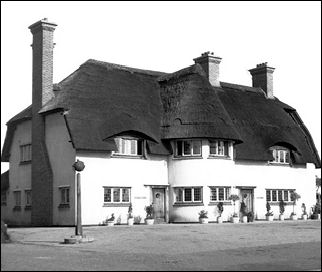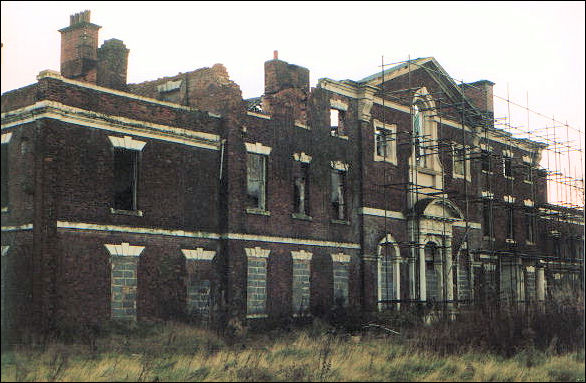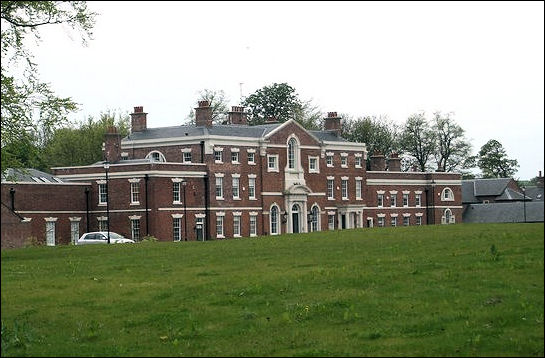|
Church Lawton, Cheshire, (close
to Stoke-on-Trent)
The Lawton family and Lawton Hall
Lawton Hall is a 17th century hall,
located at Church Lawton, about 3 miles east of Alsager. The Hall
and surrounding estate has been in the ownership of the Lawton
Family since it's construction. The land on which the Hall is sited
has been owned by the Lawton family (except for the odd
political/religious hiatus) for many centuries and certainly back to
the 12th Century.
Lawton Family of Church Lawton
The history of the Lawton family began when lands
were given to Hugh de Mara, Lord of the Manor of Chester (sometimes
known as Hugh Lupus or "Hugh the Wolf") by his brother-in-law,
William the Conqueror in gratitude for his support in the 1066
Invasion of England. Here he built a Norman Church to replace the
Saxon one - hence the Church Lawton connection.
The first record of the Lawton name, however,
occurs with Adam de Lauton, who lived during the reigns of King John
and King Henry III. Legend has it that he rescued the Earl of
Chester from an attack by a wounded wolf and in gratitude was
granted a thousand acres of land stretching from Congleton to
Sandbach. The bleeding wolf can still be seen in the arms of the
Lawton family, and is also commemorated in the nearby pub, "The
Bleeding Wolf" at Scholar Green. The thousand acre estate became
the Parish of Lauton, (later Church Lawton), and is recorded in the
Domesday Survey of 1086.
During the Reformation period Squire William Lawton bought the
church patronage from Henry VIII.
|

The Bleeding Wolf c.1965


It is recorded that the lands of Lawton were
given to Hugh de Mara, (sometimes known as Hugh Lupus or Hugh
the Wolf)# by his brother-in-law, William the Conqueror in
gratitude for his support in the invasion of England in 1066 and
it was here that he built the Norman Church which replaced an
existing Saxon one; hence the name of the settlement Church
Lawton.
#NOTE: John Brunlees provided the following correction and
information:
"Hugh de
Mara, and Hugh ‘Lupus’ d’Avranches were two separate
people. Hugh d’Avranches was the Earl of Chester and
believed to be the brother in law of William I through a
half-sister, a daughter of William’s mother Herleva of
Falaise. In Domesday People: A Prosopography of
Persons Occurring in English Documents 1066-1166, I. Domesday
Book by K.S.B. Keats-Rohan the two Hugh’s are listed as
two different people. Keats-Rohan states that Hugh de
Mara was a tenant of Earl Hugh, and also lists de Mara’s
wife and children that are totally different from Earl
Hughs.
Also within the Domesday book (Phillimore, Vol.26, Cheshire)
it states that the two manors of Lawton are held by ‘Hugh
(son of Norman) holds from the Earl’, signifying again, that
they were two different people, and also Hugh d’Avranches
father was Richard le Goz, Vicomte of Avranches in
Normandy."
There is a legend that Adam de
Lauton (temp King John and King Henry III) rescued the Earl of
Chester from an attack by a wounded wolf and by way of thanks
was granted
a thousand acres
of land stretching all the way from the town of Congleton
to Sandbach. This legend is clearly commemorated in the armorial
bearings of the Lawton family. (Scholars Green borders Church
Lawton and is within the bounds of the Lawton estates).

Lawton of
Lawton
the arms were granted in 1572
|
Ownership of the estate has considerably diminished over the
subsequent centuries, but is still in the possession of the Lawton
family, though members now live as far afield as Kent, America and
Spain. Lawton Hall, the country seat, built in the 17th century, was
part being destroyed by a fire in 1997.
The last squire to live there left
during the First World War when for a time it was used as a
hospital, and during the Second World War it was used by the local
fire service. Between the wars it also served as a hotel and a
school for the disabled. In 1952 it was leased by Mr Harrison and
became a private school which ran until it closed in 1986. For
several years thereafter, the property was uninhabited and became
derelict and several disputes over ownership placed the property in
limbo. By the mid-1990s the Hall had fallen victim to vandalism and
theft, with most of its valuable fittings being torn out or wrecked.

Lawton Hall - ravaged by fire
mid 1900's

Lawton Hall - after extensive restoration
mid 1900's
photo: Steve Lewin May 2007

|
 
previous:
Church
Lawton and the canal |
![]()
![]()